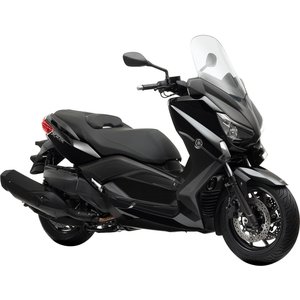Yamaha YP 400 R X MAX (2013–2020): A Maxi-Scooter That Balances Urban Agility and Touring Potential
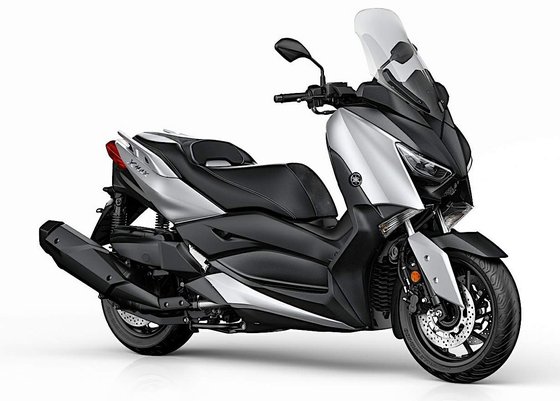
Introduction
The Yamaha XMAX 400 isn’t just a scooter—it’s a statement. From its debut in 2013 through its 2020 iteration, this maxi-scooter carved out a niche as a versatile machine equally at home weaving through city traffic or devouring highway miles. With a 395–399 cc engine, motorcycle-grade tech, and clever storage solutions, the XMAX 400 challenges stereotypes about what a scooter can (and should) be. Having spent time with this model, I’m here to break down why it remains a compelling choice for riders who refuse to compromise.
Design & Aesthetics: Sharp Angles Meets Functional Sophistication
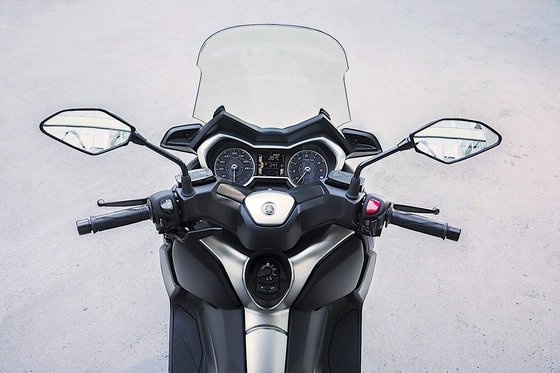
Yamaha’s design team clearly took inspiration from their sportbike catalog when shaping the XMAX 400. The aggressive twin-LED headlights, angular bodywork, and boomerang-shaped rear give it a futuristic, almost predatory stance. But this isn’t just about looks—the sculpted windshield (adjustable with basic tools) cuts through windblast at higher speeds, while the 780 mm width keeps it narrow enough to lane-split where legal.
The dual-tone seat deserves special mention. At 785–800 mm in height (30.9–31.5 inches), it’s accessible for riders of average stature, and the independent backrest is a lumbar-saving touch during long rides. Color options evolved over the years, from understated blacks and greys to bolder special editions like the 2015 "MOMO Design" and 2019 "Iron Max," which added blacked-out wheels and metallic accents.
Engine & Performance: Small Displacement, Big Confidence
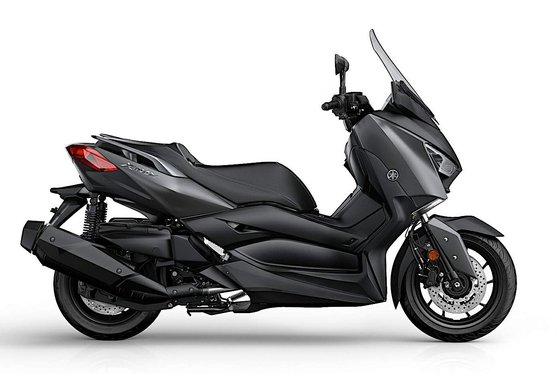
At its heart lies a liquid-cooled, 395 cc single-cylinder DOHC engine—a configuration that defies its “scooter” label. Output hovers around 33 PS (24 kW) and 36 Nm (26.6 lb-ft) of torque, numbers that translate to real-world usability. Throttle response is crisp thanks to Yamaha’s fuel injection system, and the engine’s 7,500 RPM power peak feels eager without being strained.
Twist the throttle from a standstill, and the CVT transmission delivers smooth, linear acceleration. It’ll hit 60 km/h (37 mph) in under 6 seconds—enough to outpace urban traffic—and comfortably cruise at 120 km/h (75 mph). The real surprise is how composed it feels at highway speeds. Unlike smaller scooters that vibrate like unbalanced washing machines, the XMAX 400’s counterbalancer keeps things refined even near its 140 km/h (87 mph) top speed.
Ride Experience: A Surprising Dance Partner
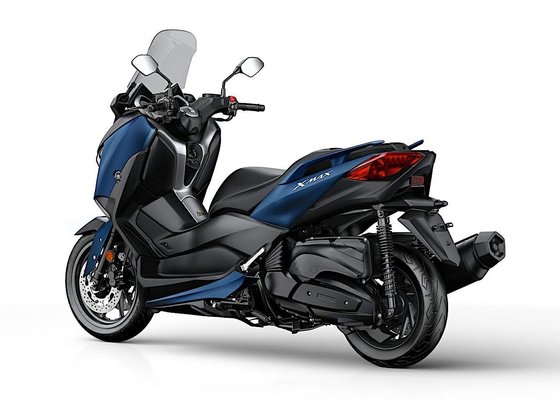
Riding the XMAX 400 feels like piloting a lightweight motorcycle rather than a traditional scooter. The 15-inch front and 13-inch rear wheels (shod in 120/70 and 150/70 tires, respectively) offer stability mid-corner, while the telescopic fork and unit swing rear suspension handle bumps with plushness unexpected in this category.
At 210–215 kg (463–474 lbs), it’s no featherweight, but the low center of gravity and floorboard ergonomics make it flickable in traffic. The wide handlebars provide leverage for quick direction changes, and the dual 267 mm front discs (with ABS) inspire confidence during hard stops. Yamaha’s traction control system, introduced in later models, is unobtrusive but welcome on rain-slicked roads.
Practicality: Built for the Daily Grind (and Weekend Escapes)
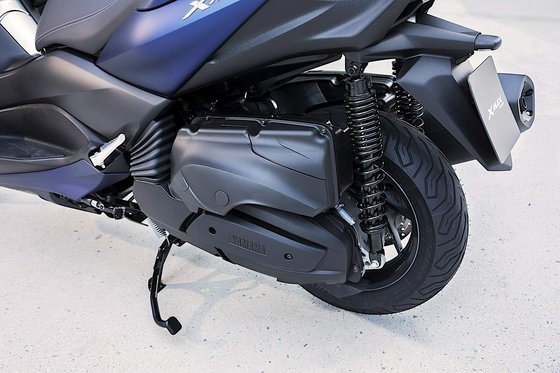
This is where the XMAX 400 shines. The underseat storage swallows two full-face helmets—a rarity even among maxi-scooters—and the lockable compartment includes a light for nighttime rummaging. Add the glovebox (with 12V outlet) and optional top case, and you’ve got a grocery-getter that doubles as a weekend tourer.
Fuel efficiency varies between 4.1–4.5 L/100 km (57–52 MPG), giving a 320–350 km (200–220 mile) range from its 13–14 L (3.4–3.7 gal) tank. That’s enough for most commutes, though highway jaunts might require planning. The 105 mm (4.1-inch) ground clearance is sufficient for curbs, but rough roads demand caution.
Technology: Smarter Than Your Average Scooter
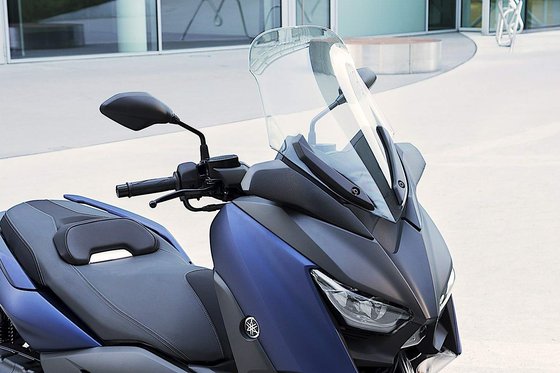
Yamaha packed the XMAX 400 with features that blur the line between scooter and premium motorcycle:
- Keyless ignition: Start the engine or open the storage with a fob in your pocket.
- Full LED lighting: The taillight’s “guidance light” design is both stylish and functional.
- Dual-channel ABS: Standard on later models, with a rear parking brake for slopes.
- LCD + analog dash: A retro-modern combo showing fuel, trip data, and maintenance alerts.
Competition: How the XMAX 400 Stacks Up
The maxi-scooter segment is fiercely contested. Here’s how Yamaha’s offering holds up:
Honda Forza 350
- Pros: Lighter (185 kg), better fuel economy (3.5 L/100 km).
- Cons: Less power (29 PS), smaller storage (single helmet).
Verdict: Ideal for urbanites; the XMAX 400 better suits highway riders.
Suzuki Burgman 400
- Pros: Plush seat, higher wind protection.
- Cons: Heavier (229 kg), dated styling.
Verdict: The Burgman is a touring couch; the XMAX 400 feels sportier.
BMW C 400 X
- Pros: Premium badge, dynamic ASC stability control.
- Cons: Pricier maintenance, tighter storage.
Verdict: The BMW appeals to brand loyalists; Yamaha offers better value.
Maintenance: Keeping Your XMAX 400 in Peak Form
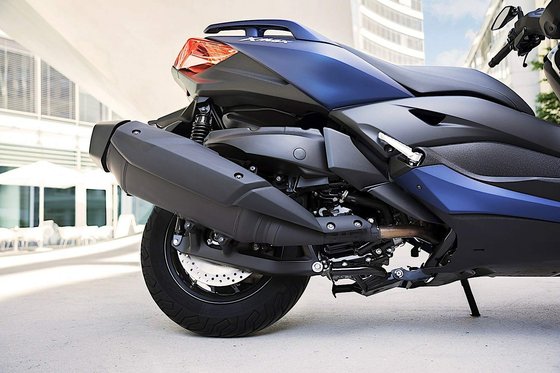
Owners praise the XMAX 400’s reliability, but proactive care is key:
- Oil Changes: Use SAE 10W-40 (1.7L with filter). MOTOPARTS.store recommends Liqui Moly Street Race 10W-40 for smoother shifts.
- Coolant: Replace every 2 years with ethylene glycol-based fluid (1.3–1.48L capacity).
- Spark Plugs: NGK CR7E (standard) or CR7EIX iridium for longevity.
- Tires: Maintain 2.2 bar (32 psi) front / 2.5 bar (36 psi) rear. Consider Michelin City Grip 2 for wet grip.
- Belt Drive: Inspect every 12,000 km (7,500 miles). Early wear? Upgrade to a Gates Powerlink belt.
Pro Tip: The 250 ml final drive oil (SAE 10W-40) is often overlooked—change it every 8,000 km to prevent drivetrain whine.
Conclusion: The Scooter That Thinks It’s a Motorcycle
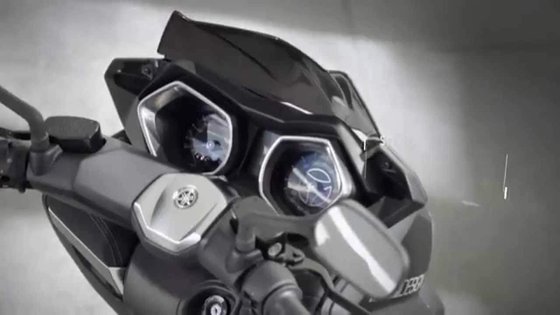
The Yamaha XMAX 400 isn’t for everyone—die-hard motorcyclists might scoff at its step-through design. But for riders seeking a do-it-all machine that dodges traffic by day and tackles weekend adventures by night, it’s a revelation. From its peppy engine to its gadget-friendly storage, this scooter proves that practicality doesn’t have to come at the expense of excitement.
Whether you’re upgrading from a 125 cc commuter or downsizing from a heavyweight tourer, the XMAX 400 deserves a spot on your shortlist. And when it’s time to personalize or maintain yours, MOTOPARTS.store has the expertise (and parts) to keep your Yamaha running like new.
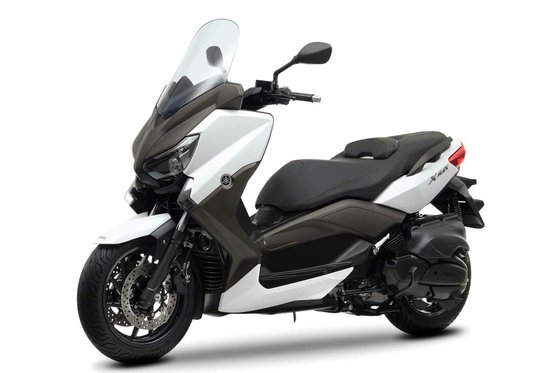

Specifications sheet
| Engine | |
|---|---|
| Stroke: | Four-stroke |
| Max power: | 24 kW | 32.0 hp |
| Max torque: | 36 Nm |
| Fuel system: | Fuel Injection |
| Lubrication: | Wet sump |
| Max power @: | 7500 rpm |
| Displacement: | 395 ccm |
| Max torque @: | 6000 rpm |
| Configuration: | Single |
| Cooling system: | Liquid cooled |
| Compression ratio: | 11.2:1 |
| Number of cylinders: | 1 |
| Dimensions | |
|---|---|
| Wheelbase: | 1565 mm (61.6 in) |
| Wet weight: | 215 |
| Seat height: | 785 mm (30.9 in) |
| Overall width: | 780 mm (30.7 in) |
| Overall height: | 1390 mm (54.7 in) |
| Overall length: | 2190 mm (86.2 in) |
| Ground clearance: | 105 mm (4.1 in) |
| Fuel tank capacity: | 14 L (3.7 US gal) |
| Drivetrain | |
|---|---|
| Belt type: | V-Belt Automatic |
| Final drive: | belt |
| Transmission: | Automatic CVT |
| Maintenance | |
|---|---|
| Rear tire: | 150/70-13 |
| Engine oil: | 10W40 |
| Front tire: | 120/70-15 |
| Break fluid: | DOT 4 |
| Spark plugs: | NGK CR7E or NGK CR7EIX |
| Spark plug gap: | 0.8 |
| Final drive oil: | 250 ml SAE 10W-40 |
| Coolant capacity: | 1.48 |
| Forks oil capacity: | 0.26 |
| Engine oil capacity: | 1.7 |
| Engine oil change interval: | Every 5000 km or 2 years |
| Valve clearance (intake, cold): | 0.15–0.20 mm |
| Valve clearance check interval: | 24,000 km / 15,000 mi |
| Valve clearance (exhaust, cold): | 0.25–0.30 mm |
| Recommended tire pressure (rear): | 2.5 bar (36 psi) |
| Recommended tire pressure (front): | 2.2 bar (32 psi) |
| Chassis and Suspension | |
|---|---|
| Frame: | Steel |
| Rear brakes: | Single 267 mm disc, 1-piston caliper (ABS on some models) |
| Front brakes: | Double 267 mm discs, 2-piston calipers (ABS on some models) |
| Rear suspension: | Unit swing |
| Front suspension: | Telescopic fork, 35 mm diameter |
| Rear wheel travel: | 110 mm (4.3 in) |
| Front wheel travel: | 110 mm (4.3 in) |



